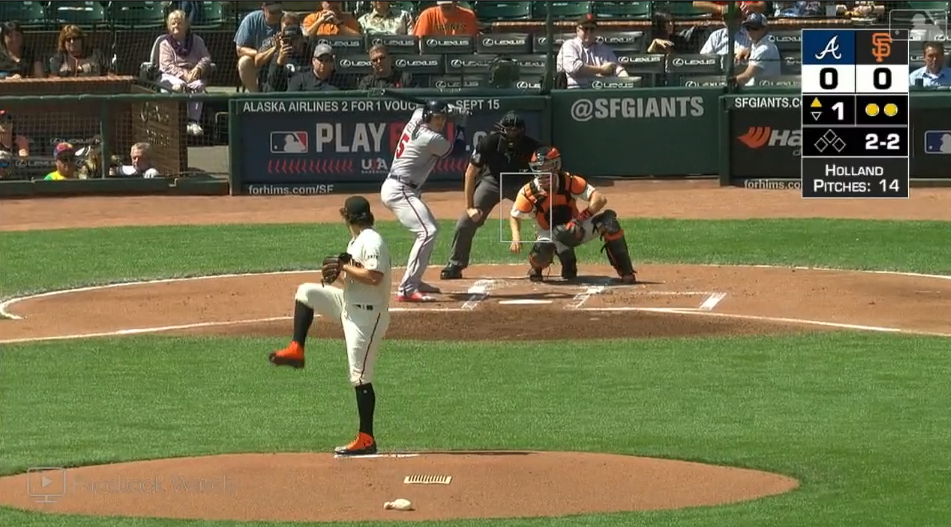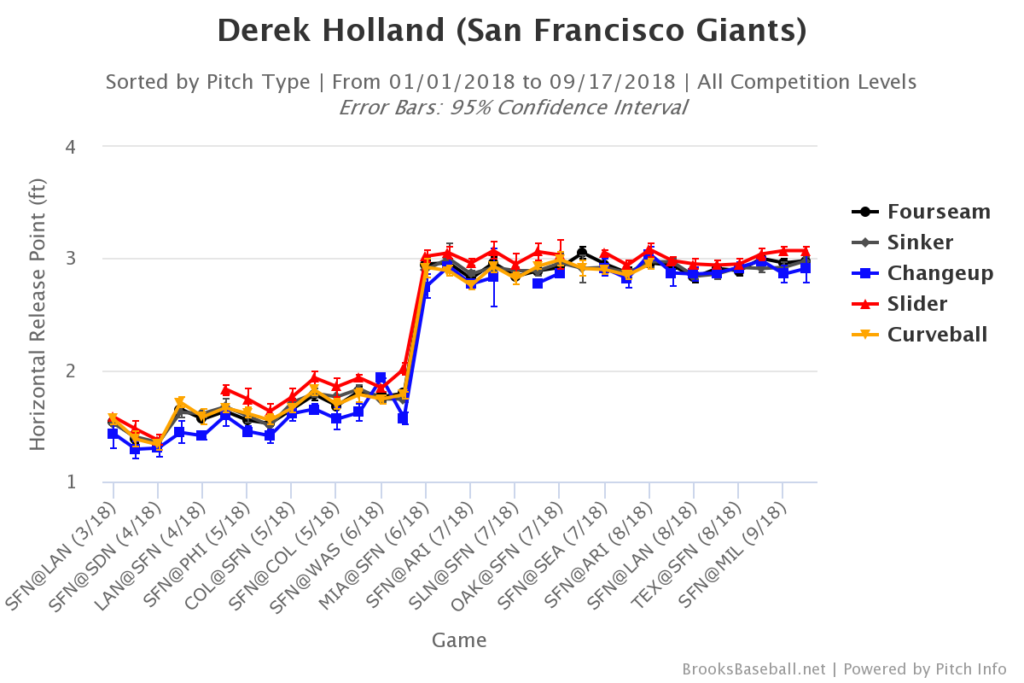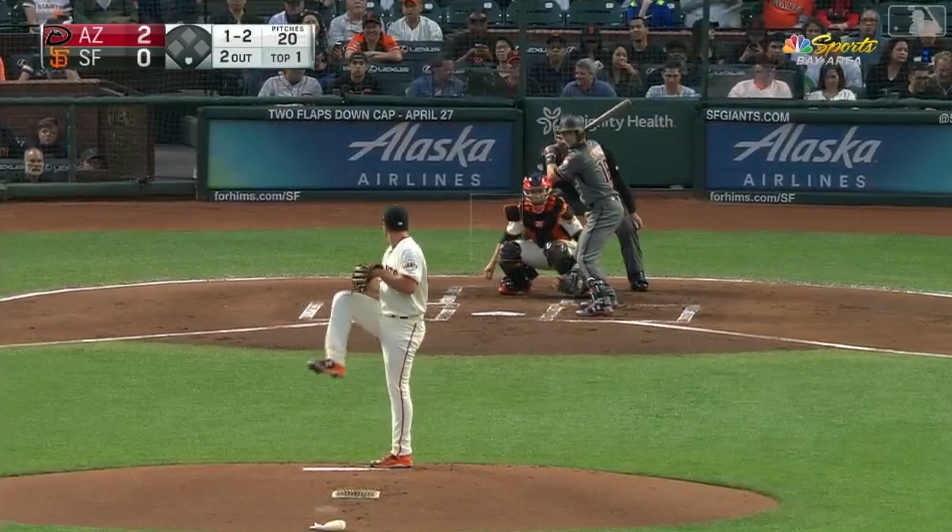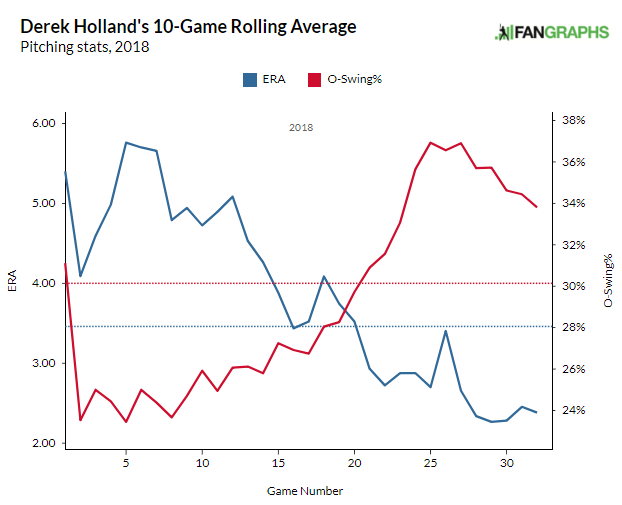Derek Holland Is Good Again?

The year is 2011. The Rangers are good; they’re in their second straight World Series. They’re down 2 games to 1. Facing a potential 3-1 series deficit, manager Ron Washington hands the ball to a 24-year-old lefty with a 95 mph sinker, who had given up just 8 earned runs in his final 5 regular season starts to finish out the second half with a 3.02 ERA mark. The 24-year-old lefty threw 116 pitches and recorded 26 outs (8.2 IP), 7 via strikeout. The Rangers would eventually lose in 7 Games (Game 6 was the David Freese game), but the promising young lefty, Derek Holland, made his mark on the baseball world.
He was a breakout pick. I featured him alongside Madison Bumgarner in an article about the guys prepared to catapult into superstardom. All was good. Except, Holland never broke out. His best season, 2013, was followed by 3 injury-riddled campaigns. Now though, nearly 32 and with a few miles per hour missing from the radar gun, Derek Holland looks like he could be very good again.
To appreciate his recent run of success, which I”m betting has flown under your radar, you should first remember just how bad he was for the three year stretch from 2015 through 2017.
Holland’s 5.50 ERA in that stretch was the second worst of anybody who threw as many as innings as he did. (Anibal Sanchez, who is currently rocking a 3.01 ERA for the first place Braves, was worse.) He was bad. He didn’t strike many guys out and walked too many. But the Giants signed him this offseason as something of a reclamation project. They found a replacement for Matt Moore, a talented lefty whose results never aligned with the scouting report.
Holland pitched about how you would expect a veteran getting paid $1.5M to pitch through the first 14 games of the year. He managed a 4.48 ERA, struck some guys out, walked some guys, and gave up a bunch of home runs. Then, he made a subtle change. He adjusted his release point.
 That’s nearly a foot! Either the 31 year-old changed his arm slot midseason, or he somehow moved. I did a bit of homework and it turns out that he did move- from the extreme third base side of the rubber to the extreme first base side of the rubber.
That’s nearly a foot! Either the 31 year-old changed his arm slot midseason, or he somehow moved. I did a bit of homework and it turns out that he did move- from the extreme third base side of the rubber to the extreme first base side of the rubber.
This isn’t just the case of Holland moving depending on the batter. I have other pictures of the pitcher. He’s over there towards first base all the time now. And it’s working.
Since Holland made the move, he’s sporting a 2.61 ERA in 86 innings. He was squeezed out of the Giants rotation for a bit in July and looked quite good in the bullpen, but he’s rocking the same 2.61 ERA whether we remove those bullpen innings or if we only look at his starts. He’s striking out a batter per inning, and he’s walking fewer batters than he has in years.
This subtle change may not seem like much, but it adds to the list of pitchers who have moved to a new home on the rubber and found near instant success. Blake Snell did it in the second half last year and has carried his success through to a 2.03 ERA this year, good for third-best in baseball. And David Price has more famously made the same move this year, to second half success that has Red Sox fans excited.
What is it about the move across the rubber that has made Holland that much more effective? Is it really all about the angles and deception, as I wrote in July about the most left pitch? It can’t all be about the angle since he’s improved his wOBA against by about 40 points to both lefties and righties since moving across the mound.
The deception is real, though. I have one more chart for you. Below is the percentage of pitches outside of the zone that hitters swing at plotted against his ERA on the year. Note how he started getting more swings outside of the zone around the same time that he moved across the rubber (Game 15) and that the trend has held for awhile now.
Derek Holland was good for a spurt in 2011 when he was 24. Everyone thought that he would take the next step in his career and become a dominant MLB pitcher. That hasn’t quite happened, but thanks to a subtle shift across the rubber, he appears poised to follow JA Happ into a mid-30s relevant good. That’s a whole lot better than bad.
-Sean Morash














